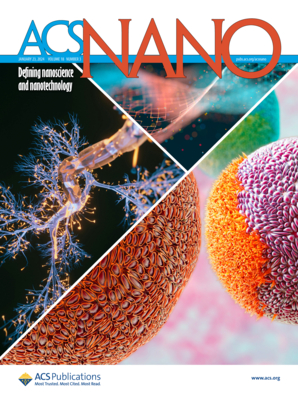Quantum Dot Interface-Enabled Cross-Coupling Acylation by Direct Aldehyde Activation under Visible Light
IF 15.8
1区 材料科学
Q1 CHEMISTRY, MULTIDISCIPLINARY
引用次数: 0
Abstract
Cross-coupling acylation by direct aldehyde activation is ideal to construct a useful carbonyl motif. However, the strong C–H bond energy, short radical lifetime, and mismatched radical polarity render this reaction a huge challenge. Herein, the semiconductor quantum dots (QDs) interface is demonstrated to overcome the obstacles lying on the way to acylating alkene or alkylarene, directly activating the formyl C–H bond into an acyl radical. Further stabilization of the obtained radical species by the QD interface ensured their effective cross-coupling with the generated intermediate from the coupling partner. The interface of QDs was exemplified to execute photochemical transformation, showcasing a highly efficient and selective cross-coupling acylation reaction under extremely mild conditions.

求助全文
约1分钟内获得全文
求助全文
来源期刊

ACS Nano
工程技术-材料科学:综合
CiteScore
26.00
自引率
4.10%
发文量
1627
审稿时长
1.7 months
期刊介绍:
ACS Nano, published monthly, serves as an international forum for comprehensive articles on nanoscience and nanotechnology research at the intersections of chemistry, biology, materials science, physics, and engineering. The journal fosters communication among scientists in these communities, facilitating collaboration, new research opportunities, and advancements through discoveries. ACS Nano covers synthesis, assembly, characterization, theory, and simulation of nanostructures, nanobiotechnology, nanofabrication, methods and tools for nanoscience and nanotechnology, and self- and directed-assembly. Alongside original research articles, it offers thorough reviews, perspectives on cutting-edge research, and discussions envisioning the future of nanoscience and nanotechnology.
 求助内容:
求助内容: 应助结果提醒方式:
应助结果提醒方式:


